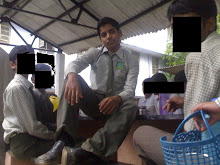
To perform a stoppie, the rider gets up to speed and applies the front brake in unison with timing the bounce of the rear suspension, leaning forward and then rides on the front wheel until the bike stops. The trick is straightforward in theory but difficult to perform. A front wheel skid due to excessive braking on unstable ground (such as dirt or gravel) or letting the back wheel rise too high will cause a crash which can result in the bicycle or motorcycle landing on the rider. Front brake control during the stoppie is essential. On a bicycle it is also easier for the back wheel to rise if the rider lifts it up with the help of the feet and the pedals. To do this put the feet on the pedals and point the toes to the ground while putting force towards the pedals, then, as the front brake is pressed, lift up the pedals.
The secret is to ride at about 10 mph and apply the brake smoothly. The rider should find an open car park or a dirt field. The front brake is applied slowly at first and then more progressively, until the front end is fully loaded. On practice runs the rider lets go of the front brake before the bike stops completely in order to get used to keeping balance after the release of the front brake.
Loading the front forks is important, because it transfers the forces from the bike's weight onto the front before the rear is brought up. A stoppie is not achieved by instantly applying full front brake. That will just slide the front (even at 10 mph).
The force needs to be transferred because without the bike's full weight on the front tire, the braking force will be greater than the tire's stopping power and the bike will start to slide. Stopping power (traction) is proportional to the weight of the tire. When the rear wheel begins to rise, the bike's full weight is on the front tire.
Keep applying the brakes harder with each pass until the rear end comes up. The rider must be ready to release the front brake as soon as the rear end is as high as comfortable.
Note: During a long and well balanced stoppie the rider will only be on the front brake 10% or less.
No rear brake is used, it will not prevent the rider from going over as it does with wheelies. However, tapping the rear brake before the rear wheel is returned to the ground will ensure a smoother landing while reducing wear of the chain, sprocket, and countershaft. If no rear brake is applied and the rear wheel is still spinning a clunking noise is common upon completion of the endo.
Keep the bike in first gear so that the bike can be accelerated when it comes down to stabilize the bike.
A stoppie performed well will put the bike in the air for 2-3 (or more) seconds.
There are more subtle tricks such as standing up on the pegs a little before braking to make the trick last longer.
Although not completely necessary, on a motorcycle a steering stabilizer is commonly used to prevent tankslappers, where the vehicle becomes out of control and the handlebars slap the tank at high speed from side to side to their full range of motion.
The stoppie is sometimes performed by squids on public roads which can end in crashes and/or injuries that are worsened by the rider's lack of protective gear.
